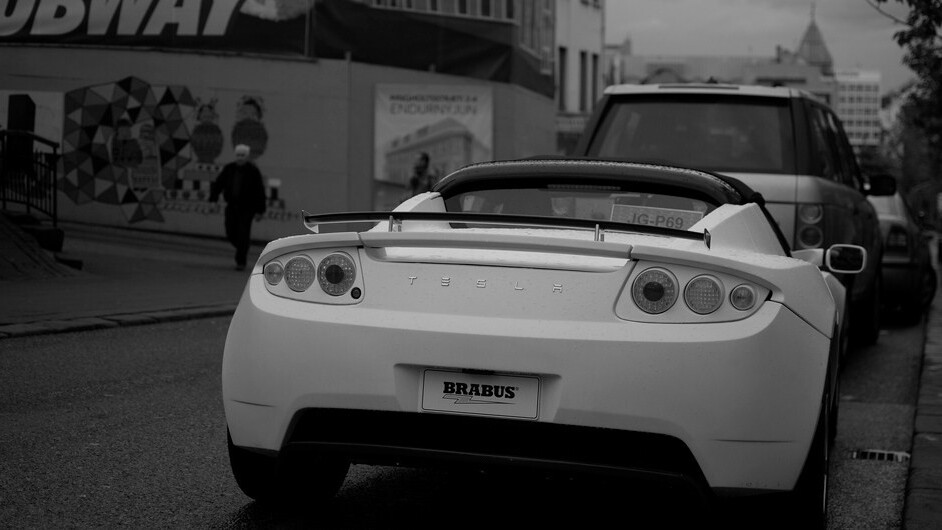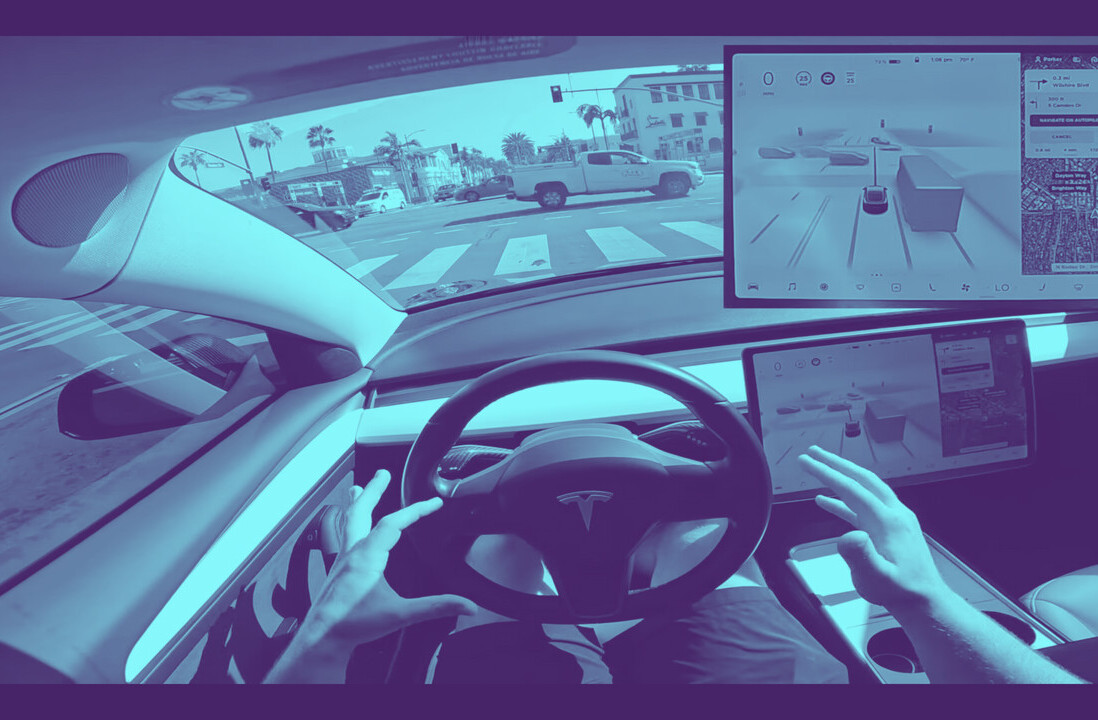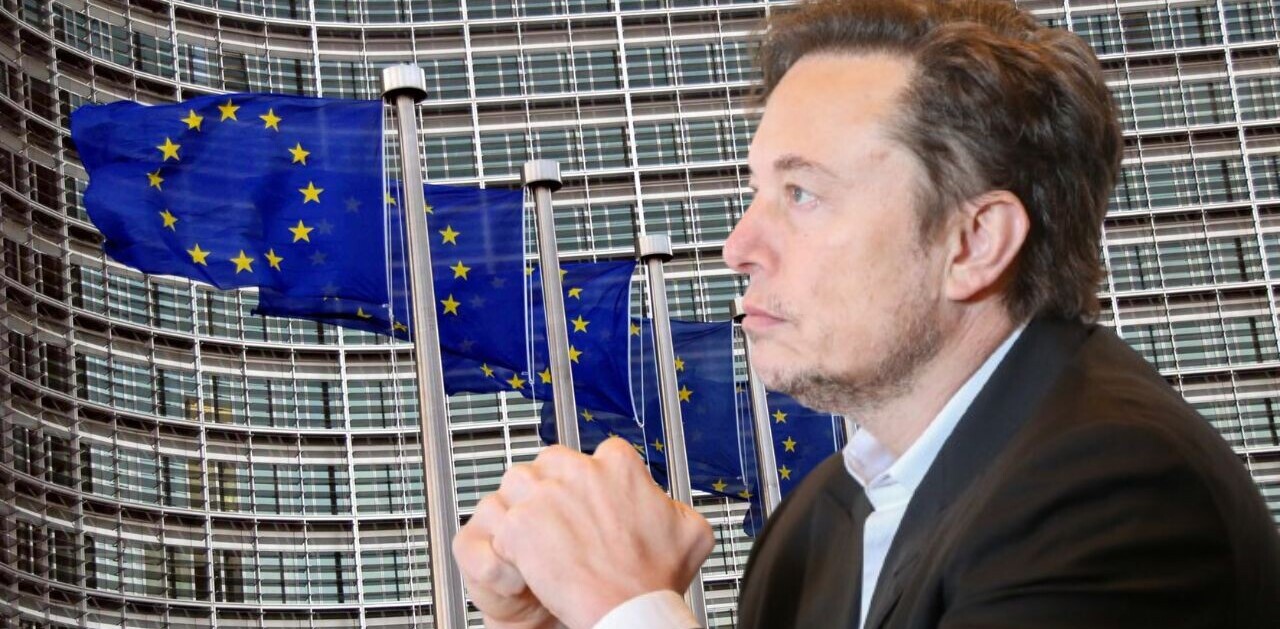
You are confused by the Tesla and New York Times beef because it is has dragged on for a week, and has had more facets than the engagement ring you wanted to buy but couldn’t stretch all your credits end to end to reach.
TNW is here to help. We’re going back to the beginning, even before the Times published its story, to walk through each release, rebuttal, and tweet up until today. You will thus be armed with more than sufficient detail to correct your friends as they attempt to discuss the story over weekend beers. Let’s begin.
Tesla v. Top Gear
Tesla lent the popular British television show Top Gear a few of its cars. It had information logging turned on during the tests, giving it insight into exactly how the cars were used, their battery charge over time, and so forth.
On the program, a purportedly out of juice Tesla was shown being pushed into a storage facility. According to Tesla’s records however, the car wasn’t out of battery power at all, making the stunt just that. It sued, but had its libel claim foiled by courts.
Tesla, irked by this, has what appears to be a policy in place now by which it has logging data turned on for all media tests of its cars to prevent future incidents. That in mind, let’s dig into our story.
The NY Times Review
Meet John Broder of the New York Times, either our protagonist or anti-hero depending on your perspective. He drove a Tesla Model S on the I-95 highway up the East Coast, using newly installed Supercharging stations – where your Tesla can be filled with a charge on the double – that have been set up along that route. Tesla is expanding its charging station network around the country, thus allowing its vehicles to find more homes.
His review is anything but positive, noting an endless sea of issues, small and large, with the driving experience of tooling around with a Tesla over any real distance. Here is the key passage from his review:
The displayed range never reached the number of miles remaining to Milford, and as I limped along at about 45 miles per hour I saw increasingly dire dashboard warnings to recharge immediately. Mr. Merendino, the product planner, found an E.V. charging station about five miles away.
But the Model S had other ideas. “Car is shutting down,” the computer informed me. I was able to coast down an exit ramp in Branford, Conn., before the car made good on its threat.
The 45 mile per hour point will return.
In short, Broder gave a detailed tale of his experiences in the Tesla vehicle. However, following the publishing of his story, Tesla’s Elon Musk took to Twitter to directly challenge its veracity.
Elon Musk’s Opening Salvo
In a series of three tweets, Elon opened the nerd version of pandora’s box, publicly calling out the New York Times for dishonesty, saying that he had the data in hand that directly proved the review was, in his words, ‘fake.’
Here are his messages, verbatim:
NYTimes article about Tesla range in cold is fake. Vehicle logs tell true story that he didn’t actually charge to max & took a long detour.
Tesla blog coming soon detailing what actually happened on Broder’s NYTimes “range test”. Also lining up other journalists to do same drive.
Tesla data logging is only turned on with explicit written permission from customers, but after Top Gear BS, we always keep it on for media.
Quite obviously, there isn’t much wiggle room in those accusations. Either Elon is correct, or the Times is; someone will lose standing in this dispute. That is one reason that the story has had such legs – there is no détente to be had.
The Times’ Pushback
The New York Times, called out by an influential technology billionaire, was quick to respond. Here is its statement:
The Times’s February 10th article recounting a reporter’s test drive in a Tesla Model S was completely factual, describing the trip in detail exactly as it occurred. Any suggestion that the account was “fake” is, of course, flatly untrue. Our reporter followed the instructions he was given in multiple conversations with Tesla personnel. He described the entire drive in the story; there was no unreported detour.
And he was never told to plug the car in overnight in cold weather, despite repeated contact with Tesla.
Just as Elon left no room in his accusation for escape, so too did the Times fail to grant themselves even an ounce of retreat. Someone is wrong.
Elon’s Full Critique
Following his Twitter fusillade, Musk took to the airwaves to fully explain his criticisms of the Times’ report. You have to hand it to the man, once he puts his mind to something he dives right into it.
Speaking with Bloomberg West, Musk again stated that the situation is in no way up for grabs, that facts would bear out his version of events, and that the paper was full of bull. Here’s the key quote:
I do not think this is a he said, she said situation. It is really black and white. The facts are the facts. He did not charge the car to full capacity, not even close. He then took an unplanned detour through downtown Manhattan, through heavy traffic, instead of going on the interstate to the charging station. He also exceeded the speed limit quite substantially, which decreased his range.
If you do all those three things, which we were clear should not be done and obviously common sense suggests should not be done, then you will not be able to go as far.
Speeding, detours, and failure to charge the battery. At this point, before Musk released the log data, Broder responded. We head to that piece next.
Broder Strikes Back
Before Tesla had processed the log data from its car – we’ll get to that next – Broder responded to Musk’s tweets, again on the New York Times’ website. I have excerpted the key parts below so that you can quickly grok his claims, and arguments. Naturally, it’s worth reading his full rebuttal, but I’ll provide you with the executive summary:
My account was not a fake. It happened just the way I described it. […] Mr. Musk has referred to a “long detour” on my trip. He is apparently referring to a brief stop in Manhattan on my way to Connecticut that, according to Google Maps, added precisely two miles to the overall distance. […]
Knowing then what I know now about the car, its sensitivity to cold and additional ways to maximize range, I certainly would have treated the test differently. But the conclusion might not have been any better for Tesla.
Broder also went on to note that Musk had called him directly – before his piece went up – to discuss the issues that he had dealt with. Then the story went up, and Musk’s mood shifted from solicitous to confrontational. Now, to the log data.
Let’s Read The Records
Elon’s ace in the hole is the data, generated by the car that, in his estimation, directly prove that Broder was not reporting truthfully. There is no short way to do the following. I have excerpted the key points that Tesla published:
As the State of Charge log shows, the Model S battery never ran out of energy at any time, including when Broder called the flatbed truck.
The final leg of his trip was 61 miles and yet he disconnected the charge cable when the range display stated 32 miles. He did so expressly against the advice of Tesla personnel and in obvious violation of common sense.
Cruise control was never set to 54 mph as claimed in the article, nor did he limp along at 45 mph. Broder in fact drove at speeds from 65 mph to 81 mph for a majority of the trip and at an average cabin temperature setting of 72 F.
At the point in time that he claims to have turned the temperature down, he in fact turned the temperature up to 74 F.
To back up those points, Tesla published graphs that refuted certain claims from the Times:

The post goes on to indicate that Broder spent some time driving around in a parking lot trying to kill the car completely. Tesla went as far as directly pointing out errors in graphics that the Times had produced.
The data appeared damning at first blush. Now, to reviews of the fresh information.
Confirmed?
TNW’s first opinion on the data from Tesla was that, provided that it was legitimate, it had made his point. The 45 mile per hour point was especially harsh. However, The Atlantic was not as impressed as most, stating:
“Not all of Musk’s data is entirely convincing and the parts that are don’t point to a malicious plot. In the end, it looks like Broder made some compromises to get from the Newark charging station to the Milford one, in both speed and temperature. Broder may not have used Musk’s car the way Musk would like, but Musk is, for now, overhyping his case for a breach of journalism ethics.”
If Broder did in fact get lost looking for the charging point, and thus circled a parking lot in a non-malicious manner or not, the fact that his story reported certain speeds that are utterly in contradiction with log data is something that cannot be swept away.
Broder himself responded to the Tesla blog post on the matter:
I cannot account for the discrepancy, nor for a later stretch in Connecticut where I recall driving about 45 m.p.h., but it may be the result of the car being delivered with 19-inch wheels and all-season tires, not the specified 21-inch wheels and summer tires. That just might have affected the recorded speed, range, rate of battery depletion or any number of other parameters. Tesla’s data suggests I was doing slightly more than 50 over a stretch where the speed limit was 65. The traffic was heavy in that part of Connecticut, so cruise control was not usable, and I tried to keep the speed at 50 or below without impeding traffic.
Certainly, and as Tesla’s logs clearly show, much of my driving was at or well below the 65 m.p.h. speed limit, with only a single momentary spike above 80. Most drivers are aware that cars can speed up, even sometimes when cruise control is engaged, on downhill stretches.
That isn’t exactly convincing.
Broder fully accepts the validity of the Tesla data, and then simply throws his hands into the air about why his story was flat wrong in terms of his speed. This is not a small detail, given that his speed is a key part of how his tale unfolded.
It’s important at this moment to let the smaller details fall away, and focus on what matters most: that Broder directly reported wrong performance information in his post, making the Tesla car appear less functional that it apparently is.
Even more crucial, if Tesla hadn’t stored the information, and then released it, Broder’s report would have been accepted as fact in every way, instead of partially backwards. Certainly, he had a tough trip. But to publish false information isn’t excusable.
CNN
CNN made the same trip as Broder, and it went well. They too noted a need for more super charging stations, but aside from that things flowed:
But as I drove into Connecticut, I realized something amazing. Not only did I have enough battery range left, I had plenty. I had at least 40 miles — more than an entire Chevy Volt’s worth of electricity — left to play with. I sped up, cruising over 70, riding in the left lane, mashing the gas pedal just to feel how fast the car could shoot from 65 to 80. I was practically giddy.
In the end, I made it — and it wasn’t that hard. There were some differences with my ride and the one from the New York Times. The weather for mine was about 10 degrees warmer. And I did mine in one day; the reviewer from the Times split it into two.
It was 10 degrees warmer during the CNN test. There is dispute on the temperate-impact on Tesla cars. Musk claims that it isn’t a major concern. Broder disagrees.
Wrap Up
In his ire Musk perhaps took his accusations a bit too far, assuming that any irregularity was malicious in nature. That said, his release of data directly implies that Broder’s report was not completely factual, which is what he had stated at the start.
Tesla is working to open more free Supercharging stations, it stated. That will tamp down concern. For now, Broder’s history as an opponent of electric cars has a new chapter to it, and though it didn’t win completely, Tesla managed to show that the New York Times published at least some incorrect data points. This goes against the paper’s claim that “The Times’s February 10th article recounting a reporter’s test drive in a Tesla Model S was completely factual, describing the trip in detail exactly as it occurred.”
Elon, if you need more testers, I’m all yours.
Top Image Credit: Vestman
Get the TNW newsletter
Get the most important tech news in your inbox each week.




